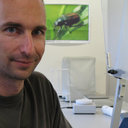Noncrop flowering plants restore top-down herbivore control in agricultural fields.
Cuvinte cheie
Abstract
Herbivore populations are regulated by bottom-up control through food availability and quality and by top-down control through natural enemies. Intensive agricultural monocultures provide abundant food to specialized herbivores and at the same time negatively impact natural enemies because monocultures are depauperate in carbohydrate food sources required by many natural enemies. As a consequence, herbivores are released from both types of control. Diversifying intensive cropping systems with flowering plants that provide nutritional resources to natural enemies may enhance top-down control and contribute to natural herbivore regulation. We analyzed how noncrop flowering plants planted as "companion plants" inside cabbage (Brassica oleracea) fields and as margins along the fields affect the plant-herbivore-parasitoid-predator food web. We combined molecular analyses quantifying parasitism of herbivore eggs and larvae with molecular predator gut content analysis and a comprehensive predator community assessment. Planting cornflowers (Centaurea cynanus), which have been shown to attract and selectively benefit Microplitis mediator, a larval parasitoid of the cabbage moth Mamestra brassicae, between the cabbage heads shifted the balance between trophic levels. Companion plants significantly increased parasitism of herbivores by larval parasitoids and predation on herbivore eggs. They furthermore significantly affected predator species richness. These effects were present despite the different treatments being close relative to the parasitoids' mobility. These findings demonstrate that habitat manipulation can restore top-down herbivore control in intensive crops if the right resources are added. This is important because increased natural control reduces the need for pesticide input in intensive agricultural settings, with cascading positive effects on general biodiversity and the environment. Companion plants thus increase biodiversity both directly, by introducing new habitats and resources for other species, and indirectly by reducing mortality of nontarget species due to pesticides. This study provides a comprehensive assessment of how habitat manipulation affects biocontrol services of a natural enemy community including both parasitoids and generalist predators. The trophic interactions between pests, parasitoids and predators were determined to achieve a better systemic understanding of top-down herbivore control, which can be strengthened when natural enemies complement each other or dampened by intraguild interactions. Our approach to selectively enhance the third trophic level to counteract specific herbivores was successful for both predators and parasitoids. Our results show significant positive effects of companion plants on predation of pest eggs and parasitism of pest larvae. Importantly, our data also suggest that carabids, staphylinids and spiders do not substantially interfere with parasitoid biocontrol as parasitoid DNA was rarely detected in predator guts.


